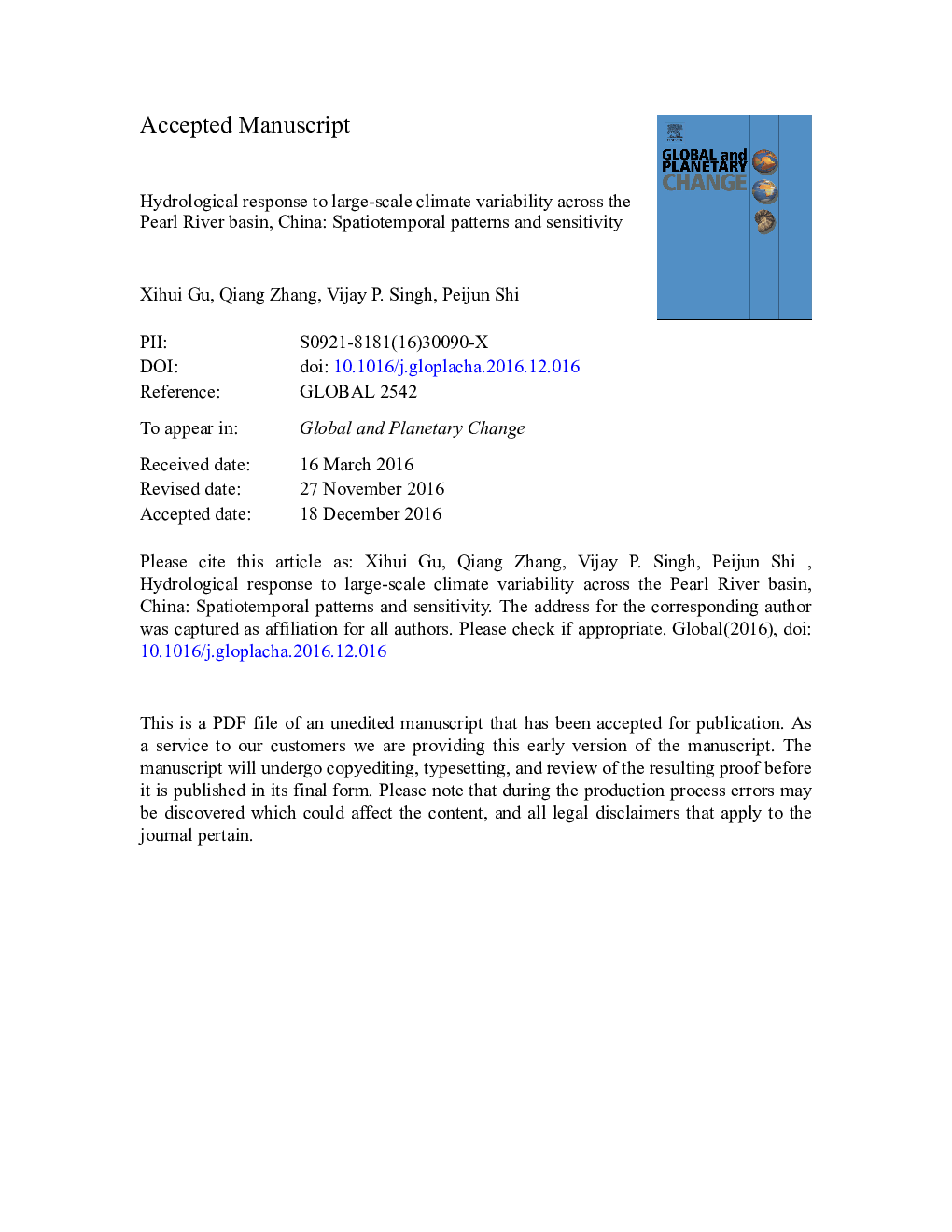| کد مقاله | کد نشریه | سال انتشار | مقاله انگلیسی | نسخه تمام متن |
|---|---|---|---|---|
| 5755290 | 1621633 | 2017 | 47 صفحه PDF | دانلود رایگان |
عنوان انگلیسی مقاله ISI
Hydrological response to large-scale climate variability across the Pearl River basin, China: Spatiotemporal patterns and sensitivity
ترجمه فارسی عنوان
پاسخ هیدرولوژیکی به تغییرات اقلیمی در مقیاس بزرگ در حوضه رودخانه مروارید، چین: الگوها و حساسیت زمانی
دانلود مقاله + سفارش ترجمه
دانلود مقاله ISI انگلیسی
رایگان برای ایرانیان
کلمات کلیدی
شاخص های کم آب و هوا، متوسط تخلیه سالانه، تخلیه سالانه حداکثر روزانه، تجزیه و تحلیل میزان حساسیت،
موضوعات مرتبط
مهندسی و علوم پایه
علوم زمین و سیارات
فرآیندهای سطح زمین
چکیده انگلیسی
The aim of this study is to examine whether the climatic driving forces can describe the observed variability in available water resources and the magnitude of flooding over the Pearl River basin. 62 stations with 41Â years of monthly streamflow records and 28 stations with 60Â years of annual maximum streamflow records were used in this study. Four climate indices related to the Atlantic, Pacific and Indian Oceans were used to analyze their influence on annual mean discharge (Qann) and annual maximum daily discharge (Qmax) of the Pearl River basin, and the indices are El Niño/Southern Oscillation (ENSO), North Atlantic Oscillation (NAO), Indian Ocean Dipole (IOD), and Pacific Decadal Oscillation (PDO). We found that the variations in available water resources and the magnitudes of floods across Pearl River can be explained by climate variability, potentially. The Qann and Qmax in different regions of the domain were significantly related to different climate indices at the same year or at the last year. In addition, in many regions the strengths of the relationships between climate indices and Qann and Qmax have been non-stationary, with either strengthening or weakening trends during the study period. Furthermore, the quantifications of climate indices impacts on Qann and Qmax (i.e. sensitive) were also assessed. The results showed that Qmax was more sensitive to the variability of atmospheric circulation than Qann. In addition, Qann varied on average between 0.3 and 24%, while Qmax varied between 0.5 and 31% per unit climate index change. The above relationships between climate indices and Qann and Qmax provided relevant information for water resources management in Pearl River basin, allowing the identification of regions with higher flood risk and enhancement of human mitigation to floods.
ناشر
Database: Elsevier - ScienceDirect (ساینس دایرکت)
Journal: Global and Planetary Change - Volume 149, February 2017, Pages 1-13
Journal: Global and Planetary Change - Volume 149, February 2017, Pages 1-13
نویسندگان
Xihui Gu, Qiang Zhang, Vijay P. Singh, Peijun Shi,
